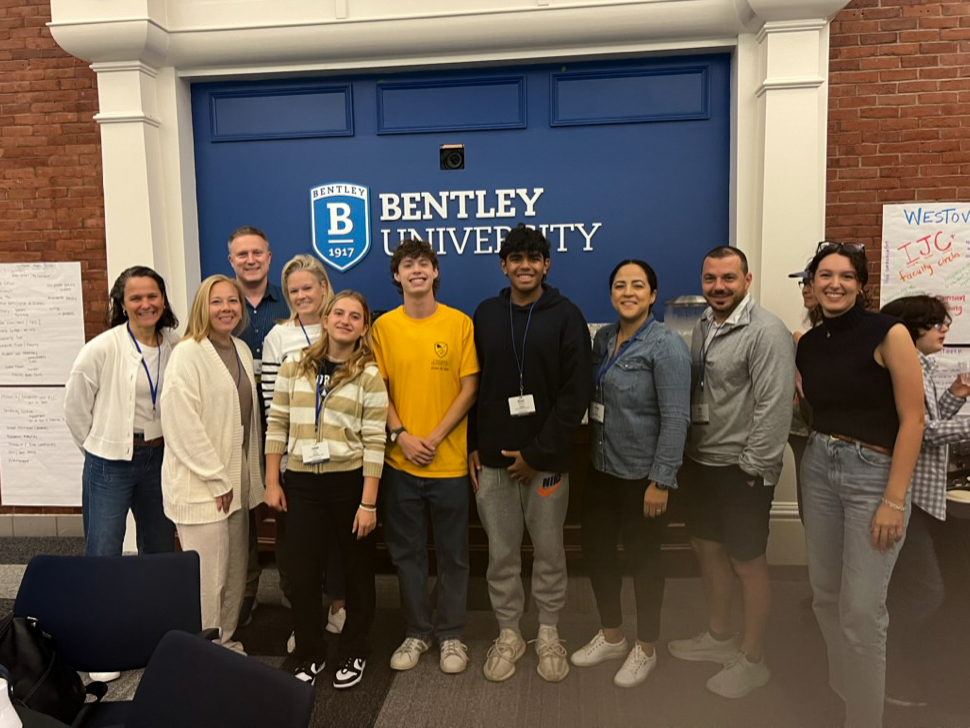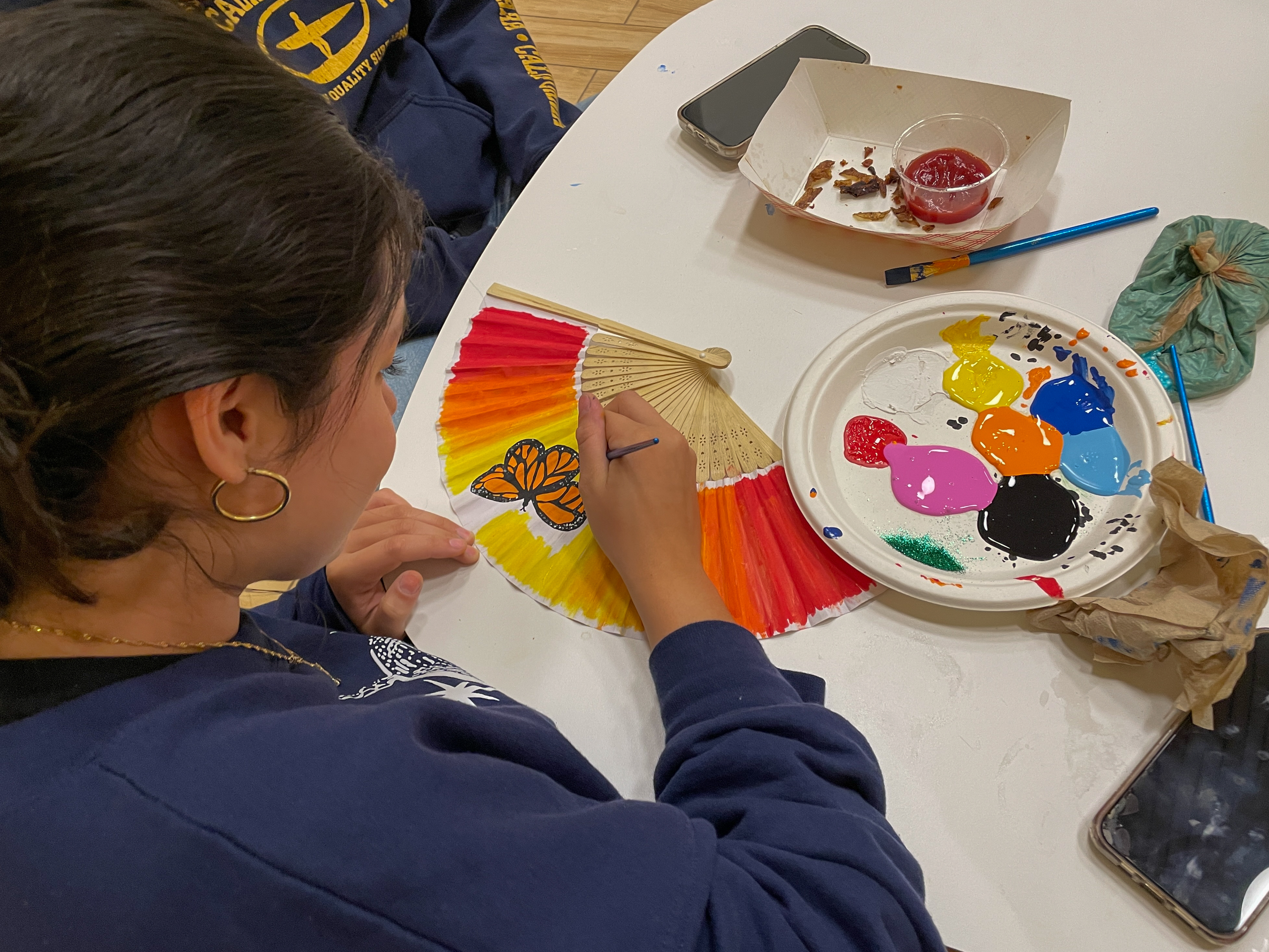Hundreds of phones across campus buzzed two weeks ago when Ms. Judi Williams, one of Choate’s three new advisers to Students of Color, sent out an introductory email to the group. In this email, Ms. Williams, Mr. Charlie Fuentes, and Mr. Edward McCatty – all three of whom are official advisers to students of color – mentioned some of their goals, articulating a plan to hold individual five-minute meetings with each student of color at Choate.
The advisers hoped that the meetings would let students know about the existence of the Students of Color Advisory. “Mr. McCatty, Mr. Fuentes, and I — we love students. That’s why we teach,” explained Ms. Williams. “So it’s important to us that we’re not just an email. We want to actually know who these students are, get to know them, and at least develop some kind of working relationship, if not a personal, close relationships where they feel safe communicating with us on a regular basis.” Ms. Williams also hopes that the first five-minute meetings won’t be all the interaction the advisers get with the students. She said, “Hopefully, over time, they’ll feel comfortable enough to come and meet us. I really just want the kids to know that they have adults on campus who are here to listen and help in any way possible.”
Director of Equity and Inclusion, Dr. Keith Hinderlie, said, “The role has always been to support students of color here on campus, to have an understanding of experiences for students, and to support, based on the needs of students.” He described that when he previously worked at Milton Academy he “reached out to all students and kept track of all that happened and was available for support. The intent was to make contact with students, let them know that there are more adults that students can come to, and to get a pulse for what the experience is like on campus now.” He is hopeful that in the capable hands of Ms. William, Mr. McCatty, and Mr. Fuentes, this role will be replicated at Choate.
Ms. Kathleen Wallace, Associate Headmaster, said that the goal of the group was to “provide our students of color with a forum where they and their friends can get together with those with shared experiences, desires, and aspirations; where all can express concerns, hopes, fears, trepidations, desires and more without fear of judgment or reprisal of any sort; where all grow to understand themselves and others better, more deeply.”
Students seem to understand the importance of these meetings. Laila Hawkins ’19, after receiving the email, said, “I think that the meetings are important to have to just talk about your experience. You talk about how you feel the School supports you, or how you feel the School doesn’t support you; some things that are going on in town, at school, in the world; etc. I think it’s just nice to have a conversation and talk about that.”
However, some students have a few doubts regarding the brevity of these meetings. “Honestly, I don’t think the meetings are going to be useful,” expressed Josephine Mah ’18. “I don’t think you can accomplish much in five minutes, especially since they the email to over three hundred people. I doubt that whoever we’re talking to is going to remember our names by the end of five minutes.”
Matt Lee ’20 agreed, “I don’t think the five-minute meetings are going to be useful. Five minutes isn’t long enough to get your thoughts out. I think they need to be a lot longer.”
However, Dr. Hinderlie believes that the “five-minute meetings” referred to in the email was intended to simply be the start of an ongoing conversation. “I don’t think there was any attempt to out anybody or offend anybody. It was really a respectful approach to make sure there were no students left behind that we missed that needed support. And the experiences of students of color at schools like Choate is unique, and students have unique needs. We want to make sure we are addressing them.”
Other students were inquisitive about the email they received. “It’s strange because I don’t feel like I identify as someone of color,” remarked Sukriti Kalra ’18. “Normally I’ll just say I’m Singaporean, so I don’t know what we’re supposed to talk about in these meetings.” Kalra, and others, are sure to flesh out their experiances in the five minute meetings, which may help illuminate pieces of students’ identities.
The Students of Color group has played a significant role historically in supporting minority students. In previous years, Mr. McCatty and Mr. Tyren Bynum ’07 served as advisers to students of colors. However, this year, Ms. Williams and Mr. Fuentes are new additions, as Mr. Bynum is no longer at Choate. Ms. Williams commented, “Historically, independent schools were not created with students of color in mind, but rather, with a certain echelon of white society.” She added, “Students come in from different situations and aren’t necessarily accustomed to certain cultural differences, teaching styles, and conditions. The cultural gap can really impact students in ways that teachers aren’t aware of.”
The Students of Color Advisory exists as a resource where students can feel comfortable going to and explaining their potential issues to people who are also of different cultures and can understand their struggles. Ms. Williams shared a recent incident concerning an Asian student of color. “A student explained to me that teachers would accuse her of being sleepy because she had monolids. She didn’t look sleepy, but she said she would have teachers tell her that she looked like she wasn’t paying attention.”
For years, advisers to students of color have been wrestling with the issue of who exactly should be included in the term “students of color.” Ms. Williams noted that many students only associated “students of color” with Black and Hispanic people. Meanwhile, some international students had never even heard the phrase before. In past years, faculty advisers would invite those who they knew for certain identified as students of color.
Ms. Williams was uncomfortable with that system, and Choate now goes by the standards of the National Association of Independent Schools. She said, “We agreed, once Dr. Hinderlie, our new Director of Equity and Inclusion, got here, that we would use the NAIS standard, which is that all people who are not white are students of color.” Dr. Hinderlie commented, “I come into Choate with an understanding that people of color represent many groups.” He continued, “Pretty much any non-white student would be included in that. Multi-racial, South Asian, Middle Eastern, Pacific Islander, etc. are all included in that.”
However, advisers commented that the Students of Color Advisory is not trying in any way to force the label “student of color” onto any person. “All we’re working with is what they put on their application,” said Ms. Williams. “We’re not here to tell people how they should identify. But we do want people to be thinking about their identity and whether or not it may be something they need assistance with.”
She added, “I do worry that students that are not students of color are going to feel like this is a way we’re trying to divide the school. We’re actually trying to do quite the opposite.”
Kate Spencer ’20, a one-fourth Brazilian student, appreciates that the Students of Color Advisory is there as a resource. She said, “I personally don’t identify with the struggle that most students of color go through, but I think that for people that are students of color, it’s a great help to them.”
Students who are not of color seem to understand the need for an advisory for students of color. Lucy Carpenter ’20 believes the group is valuable. “I think it’s great for students of color. They go through different struggles than people not of color.” Dr. Hinderlie said, “I would hope that the take away message is a message of outreach”
Dr. Hinderlie concluded, “I want students of color to feel incorporated into community and feel like all aspects of their background is something that we want to recognize, celebrate, and support.”





